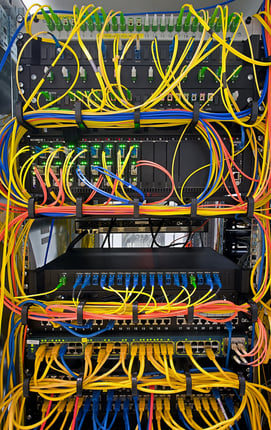Data Center Design Guide and Best Practices
 OCC is committed to designing and manufacturing the cabling and connectivity solutions that support data centers of all sizes.
OCC is committed to designing and manufacturing the cabling and connectivity solutions that support data centers of all sizes.
Check out this excerpt from "Cable Pathways: A Data Center Design Guide and Best Practices." Scott VanDenBerg is Technical Sales Specialist with Optical Cable Corporation.
"Everyone has heard the saying 'it’s the little things that make the biggest impact.' This holds true especially when designing a data center. There are many important aspects to consider—from power and cooling requirements, to servers and hardware. Good cable pathway designers know that multiple products must work together to ensure a successful pathway from point A to point B."
In his article, VanDenBerg explores a few of the key elements.
Design Considerations for Cabling and Support Products
In order to support the existing infrastructure of your data center, and accomodate future growth, there are several key considerations that VanDenBerg explores that should be made throughout the design process and installation. Check out a sample of the important things to keep in mind, or click here to read the full article:
- Installation of overhead and underfloor supports should be done in a matrix type fashion that allows cables to be routed from point to point anywhere in the data center.
- Grounding and bonding is very important when installing any cabling support product. Be sure that all racks, cabinets, and pathway support products are properly bonded and the system is grounded.
- Allow room for future growth. All cable tray and ladder rack should be sized to accommodate at least 50% growth after the initial install.
- Be very careful about stressing the cable. Be sure to use sweeping 90-degree bends always when transitioning from the pathway support and the racks or around corners.
- Be sure the heaviest cable is on the bottom of the tray or separated from the lighter cables. This will prevent the heavier cable from stressing the lightweight cables.


.png?width=58&height=58&name=X_logo_2023_(white).png)
